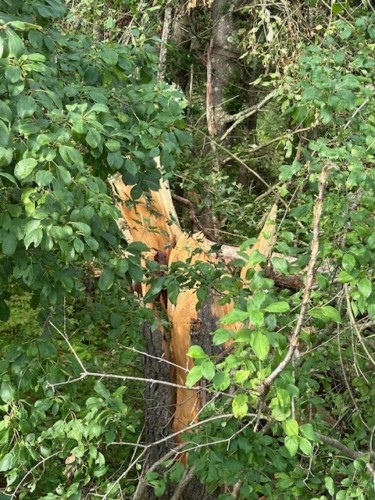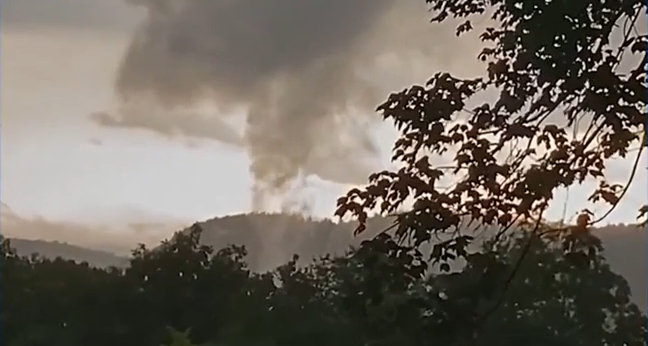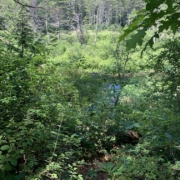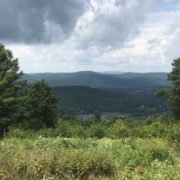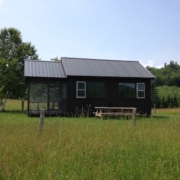Tornado Causes Natural Disturbance in Lyme Woods
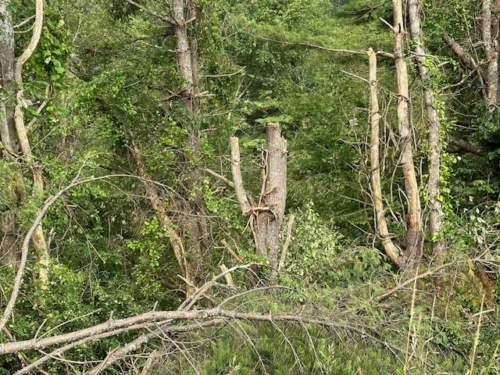
The tornado that crossed the conserved Clay Brook buffer and fields north of Whipple Hill Road in Lyme was a rare weather occurrence that had significant impact within a narrow corridor. There was significant property damage, but thankfully no injuries to people.
Though as many as 1,000 trees may have been broken, twisted or blown over by the Lyme tornado, natural disturbances like this can breathe life and health into the forest ecosystem. Within the damaged area, there will be more sunlight. The soil temperature and moisture may be different. What will happen in that microclimate? Our annual visits to monitor the conservation easement will provide an opportunity to observe as the forest responds and evolves.
Much of the diversity in a forest – the species and ages of trees and the ecological processes taking place– originate in disturbances large or small. Ice storms and fires may alter entire forest stands. But a gust of wind breaking a single tree or the beak of a woodpecker making openings for fungi in a tree creates disturbance too. Old growth forests carry the history of infinite disturbances. Some forest ecologists have advocated forest management practices that mimic nature’s random events in order to achieve some of the beneficial characteristics of older forests.
A visit to the tornado-impacted land in Lyme demonstrates that humans might mimic nature, but cutting or girdling trees with chainsaws is a puny approximation of the complexity and power of a natural disturbance. Concurrent to whatever careful and forward-looking management we may be implementing, nature is acting always. The location and breadth of upheaval are unpredictable; the resulting adaptation is constant.
Our thoughts are with the landowners and emergency personnel affected by the tornado as well as many more impacted by the recent devastating floods – natural disasters — which are reshaping lives, livelihoods and the environment.
